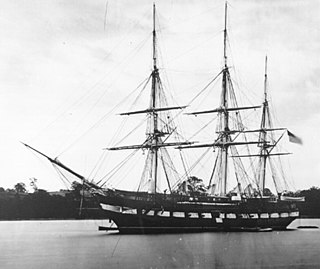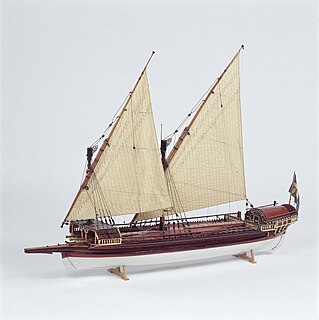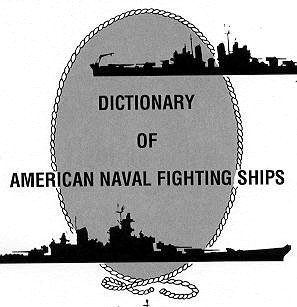
A torpedo boat is a relatively small and fast naval ship designed to carry torpedoes into battle. The first designs rammed enemy ships with explosive spar torpedoes, and later designs launched self-propelled Whitehead torpedoes. They were created to counter battleships and other slow and heavily armed ships by using speed, agility, and the power of their torpedo weapons. A number of inexpensive torpedo boats attacking en masse could overwhelm a larger ship's ability to fight them off using its large but cumbersome guns. An inexpensive fleet of torpedo boats could pose a threat to much larger and more expensive fleets of capital ships, albeit only in the coastal areas to which their small size and limited fuel load restricted them.

A warship or combatant ship is a naval ship that is built and primarily intended for naval warfare. Usually they belong to the armed forces of a state. As well as being armed, warships are designed to withstand damage and are usually faster and more manoeuvrable than merchant ships. Unlike a merchant ship, which carries cargo, a warship typically carries only weapons, ammunition and supplies for its crew. Warships usually belong to a navy, though they have also been operated by individuals, cooperatives and corporations.

In the 18th century and most of the 19th, a sloop-of-war in the Royal Navy was a warship with a single gun deck that carried up to eighteen guns. The rating system covered all vessels with 20 guns and above; thus, the term sloop-of-war encompassed all the unrated combat vessels, including the very small gun-brigs and cutters. In technical terms, even the more specialised bomb vessels and fireships were classed as sloops-of-war, and in practice these were employed in the sloop role when not carrying out their specialized functions.

The second USS Sacramento (PG-19) was a gunboat in the United States Navy.

The first USS Alligator was a schooner in the United States Navy, built in 1809 as Gunboat No. 166 and renamed Alligator during the War of 1812. Upon completion she was placed in ordinary at Wilmington, North Carolina. She was commissioned sometime in mid-1809, under Master Commandant Joseph Tarbell.
USS Marietta is a name used more than once by the U.S. Navy:
Nine ships and one shore establishment of the Royal Navy have been named HMS Wasp, with one other government vessel using the name:
HMS Calypso was a Royal Navy Cruizer-class brig-sloop. She was built at Deptford Wharf between 1804 and 1805, and launched in 1805. She served in the North Sea and the Baltic, most notably at the Battle of Lyngør, which effectively ended the Gunboat War. Calypso was eventually broken up in March 1821.

The Battle of Fort Point Peter was a successful attack in early 1815 by a British force on a smaller American force on the Georgia side of the St. Marys River near St. Marys, Georgia. The river was then part of the international border between the United States and British-allied Spanish Florida; it now forms part of the boundary between Georgia and Florida. Occupying coastal Camden County allowed the British to blockade American transportation on the Intracoastal Waterway. The attack on Forts St. Tammany and Peter occurred in January 1815, after the signing of the Treaty of Ghent, which would end the War of 1812, but before the treaty's ratification. The attack occurred at the same time as the siege of Fort St. Philip in Louisiana and was part of the British occupation of St. Marys and Cumberland Island.

The Battle of Lake Borgne was a battle between the Royal Navy and Royal Marines on one side and the U.S. Navy and U.S. Marines on the other in the American South theatre of the War of 1812. It occurred on December 14, 1814 on Lake Borgne, and allowed the British to assault New Orleans ten days later.

Saga (嵯峨) was a river gunboat of the Imperial Japanese Navy, that operated on the Yangtze River and in coastal waters of China during the 1930s, and during the Second Sino-Japanese War and World War II.

A turuma was a type of warship built for the Swedish archipelago fleet in the late 18th century. It was specifically developed for warfare in the Archipelago Sea and along the coasts of Svealand and Finland. The turuma was designed by the prolific naval architect Fredrik Henrik af Chapman for use in an area of mostly shallow waters and groups of islands and islets that extend from Stockholm all the way to the Gulf of Finland.

The archipelago fleet, officially the Fleet of the army, was a branch of the armed forces of Sweden which existed between 1756 and 1823. Its purpose was to protect the coasts of Sweden, which was surrounded by a natural barrier of archipelagoes. Throughout its existence, it was a largely independent arm of the army, separate from the navy, with the exception of a few years in the late 1760s. In a number of respects, it was a precursor of the Swedish Coastal Artillery and its coastal fleet.
HMS Ambush, or Ambush No. 5, was the American Gunboat No. 5, launched in 1805. She served in the Mediterranean later that year. The Royal Navy captured her at the Battle of Lake Borgne on 14 December 1814. She was sold in 1815.

The Norwegian gun-ships were a class of ten armed schooners that served first in the Royal Dano-Norwegian Navy, and then after 1814 in the Royal Norwegian Navy. The first was launched in 1808 and the last was lost in 1872.

USRCSurveyor was a ship of the United States Revenue Marine captured by the United Kingdom during the War of 1812. Despite the vessel's loss, the "gallant and desperate" defense of her crew against a superior force of the Royal Navy and the Corps of Royal Marines is commemorated by the United States Coast Guard. Along with the Royal Navy frigate which bested her in battle, HMS Narcissus, Surveyor is among six legendary ships memorialized in the lyrics of the Coast Guard march "Semper Paratus".

HMS Narcissus was the lead ship of the Royal Navy Narcissus-class 32-gun fifth-rate frigate, launched in 1801. She participated in the War of 1812.


















